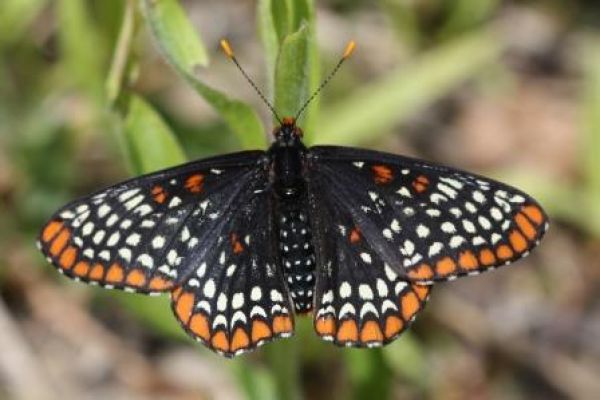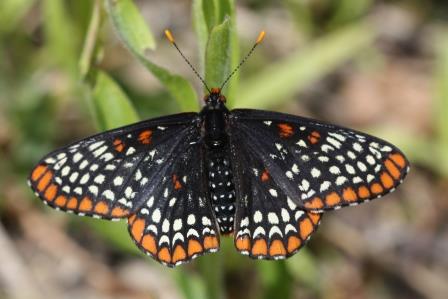
The Birds and the Bees
 This is a story about the birds and the bees (and the bats and the bugs).
This is a story about the birds and the bees (and the bats and the bugs).
That’s right, it’s a story about plant pollinators. Insects like bees and butterflies, as well as animals such as birds and bats, are responsible for pollinating two-thirds of the world’s food crops.
According to The Pollinator Partnership, pollinator.org, insect pollination contributes to $40 billion worth of food products in the United States alone. Products that people take for granted, like coffee, chocolate and apples need pollinators as a part of their reproductive cycle.
Here’s how it works (in a very simplified way):
A plant blooms. A bee (or other pollinator) lands on the flower to feed on the nectar. Pollen grains (the male contribution to plant reproduction) attach to the legs and body of the bee. The bee moves to the next flower to feed on its nectar. Some of the pollen grains it picked up previously rub off onto the flower’s carpel (the female contribution to plant reproduction), and the plant is fertilized. The fertilized plant then produces a fruit with a seed, thus ensuring that the circle of life continues.
While some plants are “self-fertile” and can pollinate themselves, many others require intervention by insects, birds or bats to move pollen from one plant to another.
Pollination of food crops is such an important issue, that companies literally truck thousands of beehives across the country to bring pollinators to the crops when they are ready to be fertilized. For example, Maine’s annual blueberry crop requires 50,000 hives of bees each year. The hives are trucked in when the plants are ready for pollination, and then moved to a new location when the blueberry crop is set.
Many of the most common pollinators are suffering dramatic population drops worldwide. The demise of bee, butterfly, bat and bird species would mean disaster for many plant species that are already rare or endangered. Many rare plant species need one specific insect to complete their reproductive cycles. In cases where the insect becomes extinct or extremely rare, the plant population declines, and in some cases, the plant becomes extinct.
The decline of pollinators would spell disaster for commercial crop production as well. Colony Collapse Disorder is the official name for the unexplained disappearance of about twenty-five percent of U.S. commercial bee colonies. Agriculture experts estimate that fully one-third of our country’s crop production would be lost without bees.
So, what can an individual homeowner to do to help save pollinators?
Install a bat box. Check out Bat Conservation International’s website (www.batcon.org) for a wealth of information on how to build and install a bat house. Note: bats are also voracious mosquito eaters.
Reduce (or eliminate) pesticide use. If a pesticide is used to kill one type of insect, it is going to have a negative impact on other insects as well. Over 98% of sprayed insecticides reach a destination other than their target species, including non-target insects, animals, air, water and soil.
Plant native plants. The Pollinator Partnership (pollinator.org) has good information on selecting plants that are good for pollinators. Local nurseries may have native plants available now, but be sure to choose only true native species, not cultivars. The cultivars do not provide equal benefits to pollinators. Red Buffalo Nursery near Hebron opens to the public for a native plant sale in the fall (www.redbuffalonursery.com).
(Adapted from a blog I first published in August 2007.)